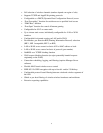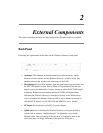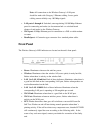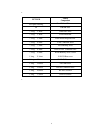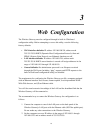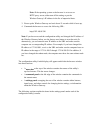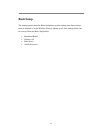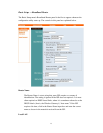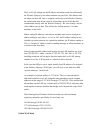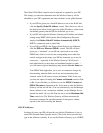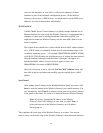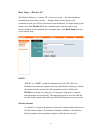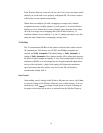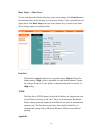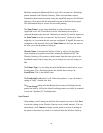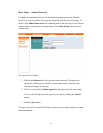14
The Local LAN settings are the IP address and subnet mask that will identify
the Wireless Gateway to the other machines on your LAN. The address must
be unique on the LAN, that is, assigned exclusively to the Wireless Gateway;
the subnet mask must be the same for all machines on the LAN that will
communicate directly with the Wireless Gateway. Be sure to keep a record
of the address you set here. This will be the “default gateway” for other
machines on the LAN.
Before setting IP addresses, note that no machine must ever be assigned an
address ending in zero (that is, x.x.x.0) or 255. An IP address ending in zero
identifies an entire network, not a particular machine. An IP address ending in
255 is a “broadcast” address, used for sending messages to all the machines on
a network at the same time.
Note also that possible subnet mask settings for the LAN interface are of the
form 255.255.255.x, where x can be 0, 128, 192, 224, 240, 248, or 252. The
installing technician will recognize that this makes the Local LAN settings
suitable for a Class C IP network or a subnet of such a network.
In the case that ISP give you a single globally legal IP address to be assigned
to the Wireless Gateway's WAN port, you will have to use what are called
“private addresses” on the LAN.
An example of a private address is 172.16.0.0. This is a network address;
individual machines on a LAN using this network address can be assigned
addresses in the range of 172.16.0.1 through 172.16.0.254. (This assumes that
all machines on the LAN use a subnet mask of 255.255.255.0; using any other
mask requires extensive technical knowledge and is beyond the scope of this
guide.)
The following three IP address blocks have been set aside by Internet
regulatory authorities specifically for local-only use:
10.0.0.0 through 10.255.255.255
172.16.0.0 through 172.31.255.255
192.168.0.0 through 192.168.255.255
Global WAN Mode



